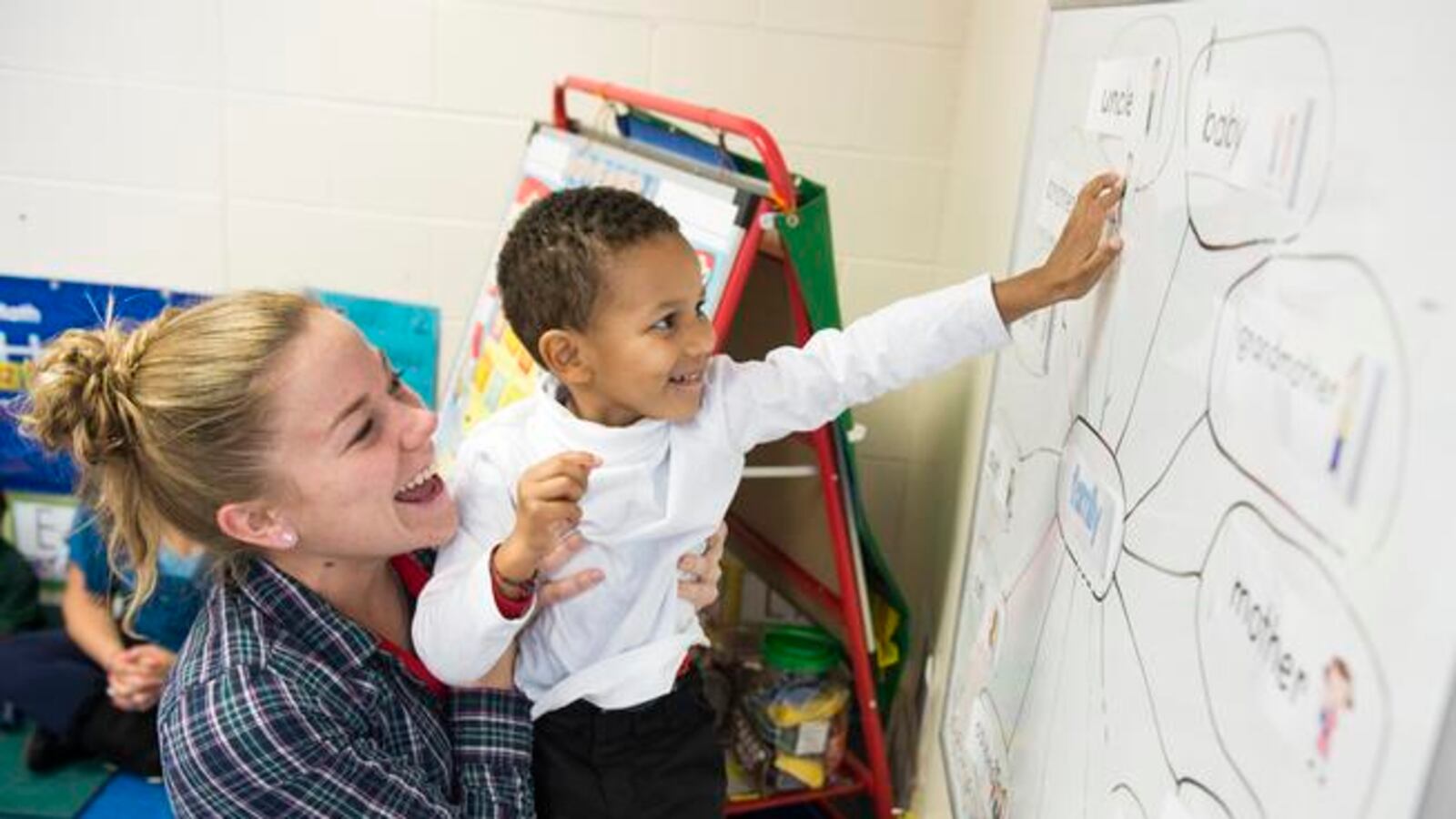In far northeast Denver, where homebuilders continue to blanket the plains with earth-toned, two-story houses and school enrollment continues to grow, Green Valley Elementary is bordering on bursting. With 764 students, it’s the largest elementary school in the city.
And inside the one-story brick building, space is at a premium.
The copy room has been converted into part of a fourth-grade classroom for 30 students. The copiers were moved into the hallway, hidden behind a gray-colored temporary wall. Another temporary wall functions as a tiny makeshift classroom for kids who need extra help.
The librarian’s office is now home to the school psychologist, while a storage area has been taken over by three teachers who help English-language learners.
The art classroom was moved out of the building altogether into half of a trailer; the other half is occupied by six math tutors. There is no plumbing, so students wash out their paintbrushes in a portable sink that sucks water from one plastic bucket and drains it into another.
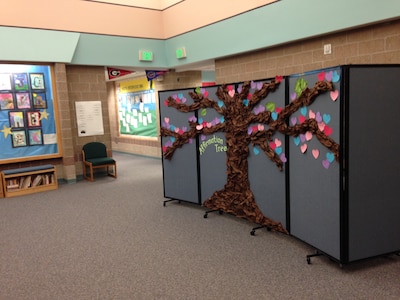
“We are using every square inch of the building and then some,” said principal Trina Jones.
In fact, a majority of schools in the far northeast neighborhoods of Green Valley Ranch, Gateway and Montbello are at capacity, and some are overflowing. The same is true for the fast-growing, family-friendly east Denver neighborhood of Stapleton.
As such, Denver Public Schools staff recently estimated the district will need to add 1,950 elementary, middle and high school seats in the far northeast in the next three years. Another 1,500 seats will be needed in Stapleton, even as school enrollment levels off citywide.
The estimates come as DPS is gearing up to ask voters in November to approve a bond to pay for school construction projects. In a time of state budget pressures and tightening district funds, DPS officials hope bond money can be used to pay for building needs that might otherwise go unmet.
The first meeting of a community advisory committee that will help the district assess those needs and craft the bond request is scheduled for later this month.
Slowing enrollment growth
DPS is the largest school district in the state, with more than 91,000 students. That’s nearly 10,000 more students than five years ago, and enrollment is expected to keep growing.
But the pace will slow down, district planning staff said. While more families are choosing DPS schools, a drop in the birth rate during the recession coupled with rising home prices and an increasing number of single-family houses being converted into pricey townhomes that don’t yield as many children is expected to keep the district’s population growth minimal.
Some gentrifying neighborhoods have even seen enrollment decreases. Some of the biggest have been in northwest Denver, where the number of elementary students declined by 4.4 percent this school year. That number is expected to stay relatively flat over the next five years.
Even though there are nearly 5,000 residential units planned for the wildly popular area, the majority of them are high-end apartments and condominiums, DPS planning staff said.
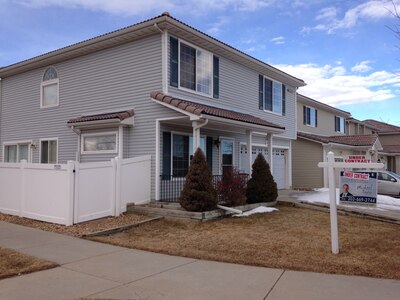
According to the district’s calculations, apartments and condos yield an average of .07 DPS students per unit, while single-family houses yield an average of .43 students per house.
Brian Eschbacher, the district’s director of planning and enrollment services, said DPS is not considering closing any schools in northwest Denver right now due to low enrollment.
“We have to continue to see how things go in the area,” he said. If the new construction ends up attracting young families with infants and toddlers, Eschbacher explained, “we should hold on.”
Stapleton: new houses, lots of kids
The affordable northeastern neighborhoods of Green Valley Ranch and Gateway, and the pricier northeastern neighborhoods of Stapleton and Lowry, are among the last in Denver where new single-family houses are being built in great numbers.
A combined total of nearly 10,000 more housing units, many of them single-family, are expected to be constructed in those four neighborhoods in the coming years, according to DPS planning staff.
And some of those homes are projected to produce more DPS students than average. The district has found that the yield from houses in Green Valley Ranch and Stapleton, in particular, is much higher: .80 in Green Valley Ranch and a whopping .83 in Stapleton.
“Stapleton is growing like crazy,” Eschbacher said. The houses there routinely sell for more than a half-million dollars, but he said that unlike other wealthier neighborhoods, where a large percentage of the kids attend private schools, the majority of families choose DPS.
“It’s lifting the schools up,” Eschbacher said.
To meet demand, DPS has opened a new elementary school in Stapleton every other year since 2010. The district will open another, Inspire Elementary, in a temporary location this fall. Inspire will need a permanent home capable of holding 500 students in the fall of 2017. And the following fall, DPS planning staff project Stapleton will need yet another 500-student elementary school.
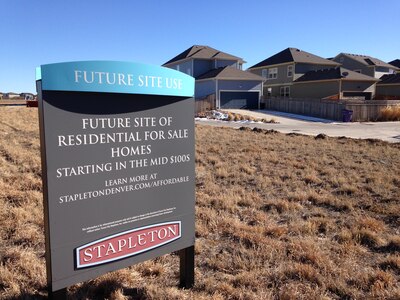
Additional middle school capacity will be needed as well, Eschbacher said. But instead of building a new middle school right away, he said the district will first grow the size of the popular McAuliffe International School from more than 800 students this year to about 1,150.
At the high school level, an additional 500 seats will be needed in Stapleton by 2018, DPS planning staff predict. The plan, Eschbacher said, is to add capacity to Northfield High, a new comprehensive high school that opened on the Paul Sandoval Campus in Stapleton this fall.
Pressing needs in the far northeast
The needs are even more immediate in Green Valley Ranch and Gateway. DPS planning staff estimate an additional 500 elementary, 450 middle and 500 high school seats will be needed there by 2017. Another 500 elementary school seats may be needed in Montbello by 2018.
The district has already approved a new high school program for the far northeast: STRIVE Prep RISE, another link in a charter school chain that currently operates nine DPS schools. It has also identified a geographic location, on the newly named Regis F. Groff Campus in Green Valley Ranch, but it doesn’t yet have funding for the building, Eschbacher said.
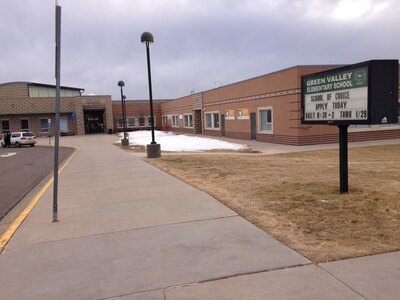
Meanwhile, the district is soliciting ideas for a new elementary school and a new middle school to open in the far northeast in the fall of 2017 through its annual Call for New Quality Schools. McGlone Elementary, a turnaround school that’s shown impressive progress and wants to begin serving middle schoolers, is expected to be among the applicants.
Elsewhere in the city, DPS planning staff is monitoring enrollment growth. The district is especially keeping an eye on the Mayfair Park and West Wash Park neighborhoods, where elementary school additions may be needed by 2018 and 2019, respectively.
Other capacity needs identified recently by DPS planning staff stem from a dearth of programming rather than a fluctuation in student enrollment.
For instance, staff said there are no high schools in southeast Denver serving the estimated 486 neighborhood students who are at risk of dropping out or not graduating. Currently, those students have to travel downtown to attend a school that meets their needs.
On the other end of the age spectrum, DPS staff identified several neighborhoods with a shortage of available preschool seats, including far southeast Denver.
Denver voters last approved a DPS bond issue in 2012. A small portion of the $466 million in bond money went to space-crunched Green Valley Elementary to turn that former copy room into part of a classroom, as well as pay for other reconfigurations meant to squeeze in more students.
But not much more squeezing can be done. And with more kids on the horizon, principal Jones said she hopes the school will be able to expand to meet the demand. Green Valley currently has a waiting list for every grade except kindergarten.
“I do not like to turn down neighborhood kids,” she said.

